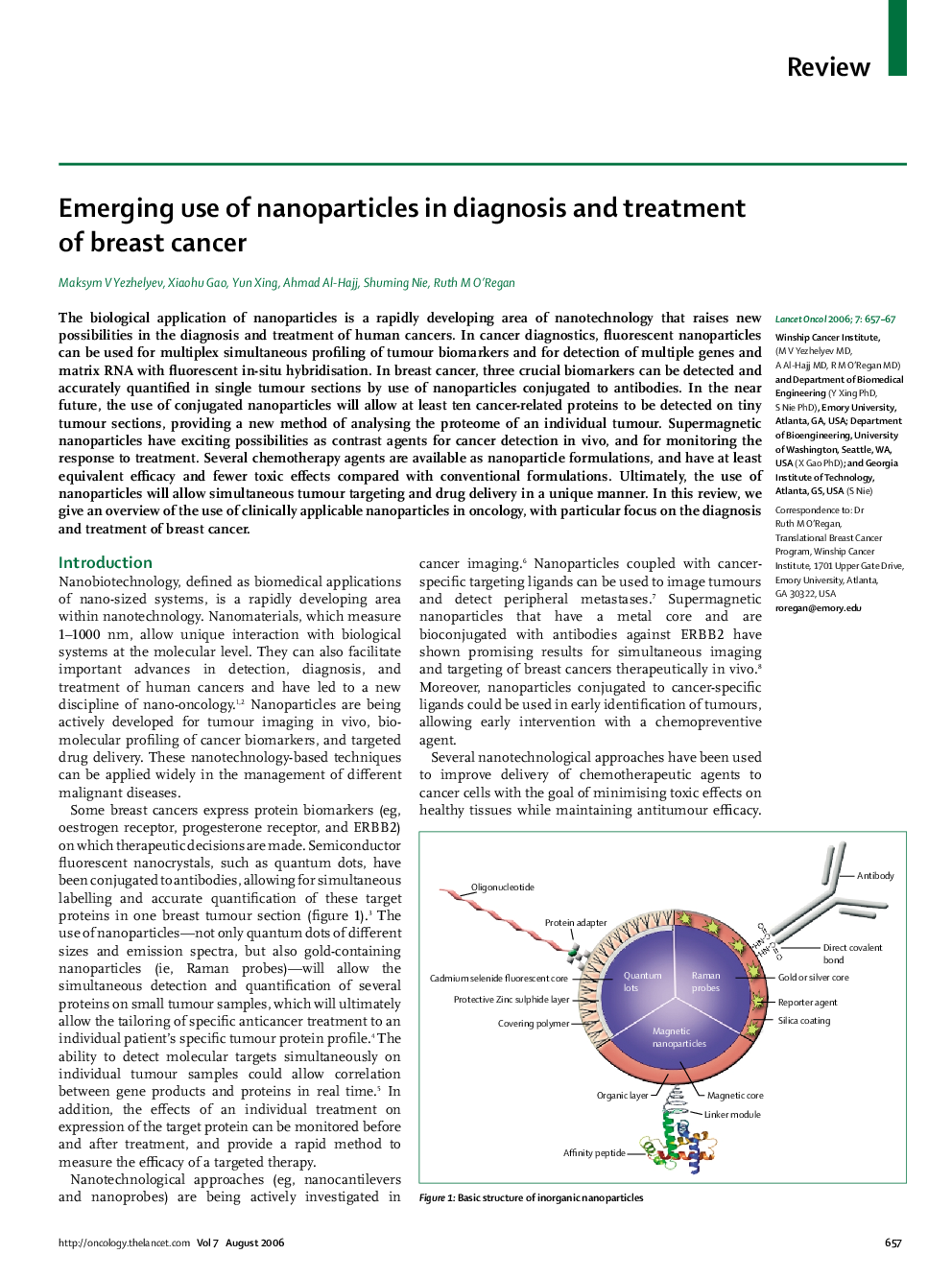| Article ID | Journal | Published Year | Pages | File Type |
|---|---|---|---|---|
| 3995682 | The Lancet Oncology | 2006 | 11 Pages |
SummaryThe biological application of nanoparticles is a rapidly developing area of nanotechnology that raises new possibilities in the diagnosis and treatment of human cancers. In cancer diagnostics, fluorescent nanoparticles can be used for multiplex simultaneous profiling of tumour biomarkers and for detection of multiple genes and matrix RNA with fluorescent in-situ hybridisation. In breast cancer, three crucial biomarkers can be detected and accurately quantified in single tumour sections by use of nanoparticles conjugated to antibodies. In the near future, the use of conjugated nanoparticles will allow at least ten cancer-related proteins to be detected on tiny tumour sections, providing a new method of analysing the proteome of an individual tumour. Supermagnetic nanoparticles have exciting possibilities as contrast agents for cancer detection in vivo, and for monitoring the response to treatment. Several chemotherapy agents are available as nanoparticle formulations, and have at least equivalent efficacy and fewer toxic effects compared with conventional formulations. Ultimately, the use of nanoparticles will allow simultaneous tumour targeting and drug delivery in a unique manner. In this review, we give an overview of the use of clinically applicable nanoparticles in oncology, with particular focus on the diagnosis and treatment of breast cancer.
